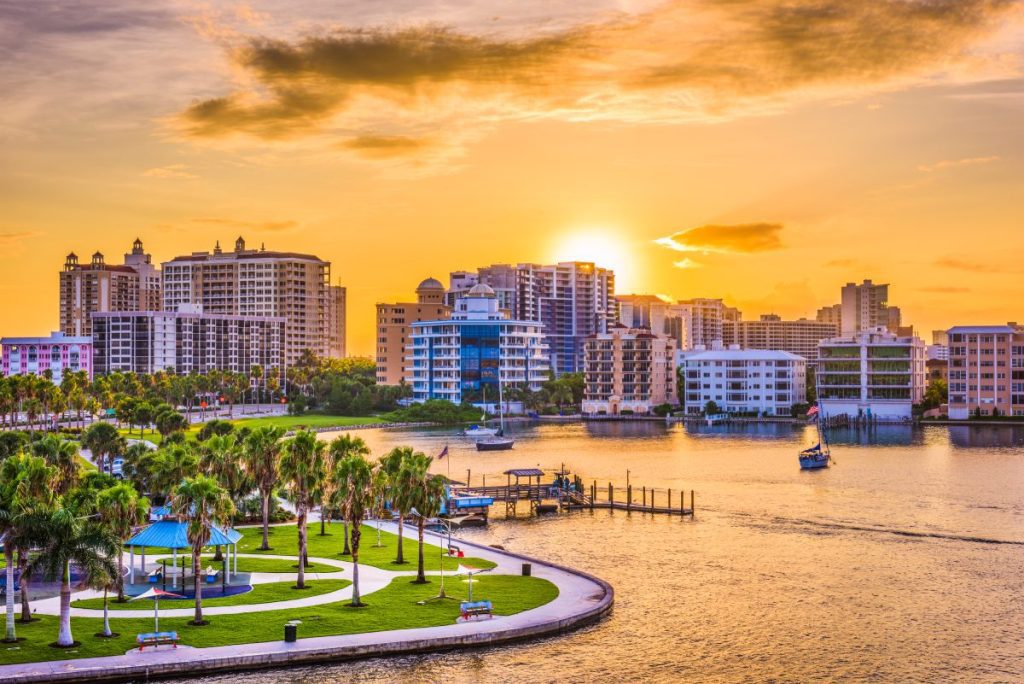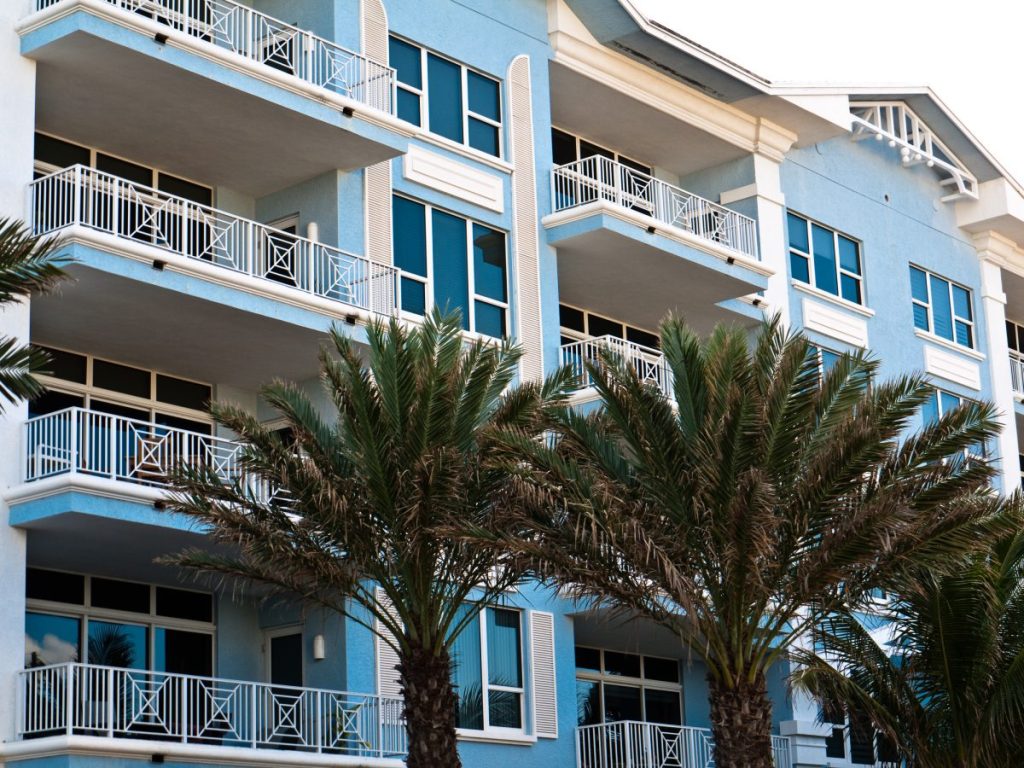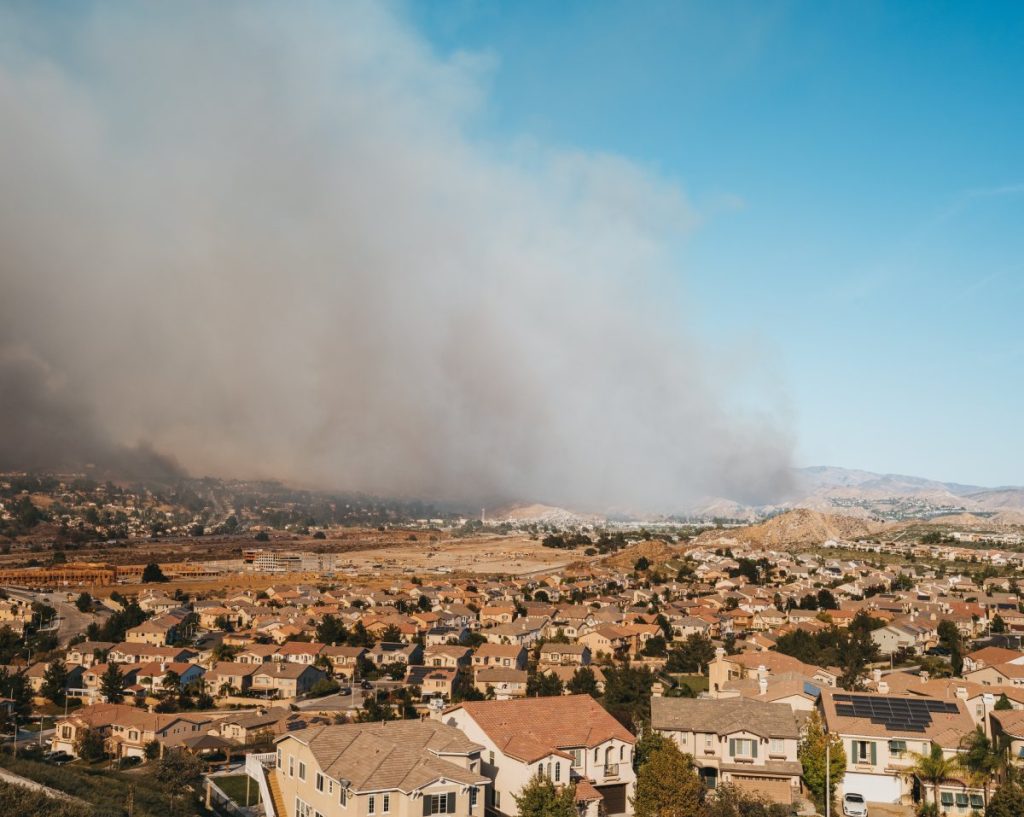Total property and capital losses from the devastating 2025 Los Angeles wildfires could range between $76 billion and $131 billion, with insured losses estimated at up to $45 billion. These fires left thousands of homeowners facing a threat that many didn’t see coming: smoke damage.
While media coverage focused on dramatic rescue efforts and homes reduced to ash, widespread smoke damage—sometimes affecting properties miles from the fire’s edge—has become a quieter but equally serious crisis. For countless Los Angeles residents, the real battle began not when the fire was extinguished, but when they filed their smoke damage insurance claims.
Understanding smoke damage claims has become critical for property owners throughout the region. Unlike the obvious destruction left behind by burned structures, smoke damage presents unique challenges that can trap homeowners in lengthy disputes with their insurance companies. This guide will help you navigate the complex world of smoke damage claims, understand your rights as a policyholder, and secure the compensation you deserve.
At Merlin Law Group, we’ve spent nearly four decades helping policyholders fight back against unfair insurance coverage practices. Our expertise becomes even more vital when dealing with the subtle but serious nature of smoke damage claims, where insurance companies often employ aggressive tactics to minimize payouts.
What Constitutes Smoke Damage?
Smoke damage extends far beyond what meets the naked eye. While visible signs like soot stains and discoloration are obvious indicators, the most dangerous aspects of smoke damage often remain hidden. Smoke carries toxic particles, including polycyclic aromatic hydrocarbons (PAHs), volatile organic compounds (VOCs), heavy metals, and fine particulate matter that can penetrate deep into building materials, HVAC systems, and personal belongings.
These combustion byproducts don’t simply disappear when the fire ends. They settle into carpets, upholstery, drywall, and even areas that appear untouched. Professional cleaning services often discover extensive contamination in attics, crawl spaces, and interior rooms that homeowners assumed were safe.
Health Risks Associated with Smoke Exposure
The health issues of untreated smoke damage cannot be overstated. Exposure to smoke residue can trigger respiratory problems, especially for individuals with asthma or chronic lung conditions. Prolonged exposure may lead to headaches, dizziness, and more serious health complications. Vulnerable populations, including children, elderly residents, and those with compromised immune systems, face heightened risks.
Even properties that show no visible smoke damage may harbor dangerous air quality issues. The subjective nature of odor detection means that some homeowners may not immediately recognize the extent of contamination affecting their property.
Why Non-Visible Damage Still Requires Remediation
Insurance companies have long recognized that smoke contamination poses serious risks requiring professional remediation. Major insurers have published detailed studies emphasizing that proper evaluation, professional cleaning, and clearance testing are essential before occupants can safely return to smoke-affected properties.
The presence of smoke particles in HVAC systems creates particular concerns, as contaminated ventilation can redistribute harmful pollutants throughout an entire structure for months after the initial exposure. This invisible threat underscores why even properties with minimal visible damage often require extensive cleaning and restoration work.
The Role of Insurance Companies
Most homeowners’ insurance policies include fire damage as a named peril, which typically encompasses smoke damage as well. Standard coverage should address structural damage, personal property losses, additional living expenses during displacement, and the costs of professional remediation services.
However, the extent of coverage varies significantly between insurance carriers and individual policies. Policyholders should carefully review their policy limits, deductibles, and any specific exclusions that might apply to smoke-related losses. Understanding your policy’s coverage before filing a claim can help prevent disputes later in the process.
Common Tactics Used To Reduce Payouts
Insurance companies have developed sophisticated strategies to minimize smoke damage payouts.
One of the most concerning trends is to dispute claims based on a requirement for “permanent physical changes” to property. This tactic allows insurers to deny coverage for smoke damage that doesn’t leave lasting visible alterations, even when professional remediation is necessary.
Other common tactics include delayed claim processing, insufficient damage assessments, and unreasonably low settlement offers. Some insurers attempt to limit coverage to areas with visible soot or strong odors, ignoring the scientific reality that dangerous smoke particles can contaminate areas throughout a property.
Understanding the Difference Between Public and Insurance Adjusters
For homeowners filing smoke damage claims, it’s important to understand the distinction between insurance adjusters and public adjusters.
Insurance adjusters work directly for insurance companies and are compensated to protect their employer’s financial interests. Typically their primary goal is to minimize claim payouts rather than ensure fair compensation for policyholders.
Public adjusters, by contrast, work exclusively for policyholders. They conduct independent damage assessments, prepare detailed reports, and negotiate directly with insurance companies on behalf of property owners. For complex smoke damage claims, where hidden contamination is common, a public adjuster’s expertise can prove invaluable in documenting losses and securing appropriate settlements.
Legal Perspectives on Smoke Damage Claims
California courts have issued conflicting rulings regarding smoke damage coverage, creating confusion for policyholders and new challenges for attorneys. Some decisions have favored insurance companies by requiring visible, permanent changes to property before coverage applies. However, these rulings often rely on poor case presentations and haven’t established a definitive legal precedent.
The key challenge in smoke damage litigation involves proving that contamination constitutes covered property damage under the language of your insurance policy. Successful cases typically involve comprehensive documentation, expert testimony regarding health risks, and detailed evidence of necessary remediation costs.
California DOI Bulletin 2025-7 and the California FAIR Plan
The California Department of Insurance has taken a strong stance against insurance companies that improperly deny smoke damage claims. Bulletin 2025-7 explicitly states that insurers cannot require “permanent physical changes” to validate smoke damage claims, directly challenging one of the industry’s most common denial tactics.
This regulatory guidance provides essential support for policyholders facing claim denials. The bulletin emphasizes that smoke is a named peril covered under standard policies and that the presence of smoke contamination, rather than visible damage, should determine coverage eligibility.
However, the California FAIR Plan—the state-mandated insurer of last resort that provides basic property insurance coverage to homeowners and businesses who are unable to obtain insurance elsewhere—has drawn significant criticism for its handling of smoke damage claims. Despite explicit instructions from the Department of Insurance to remove unlawful policy language requiring “permanent physical changes,” the FAIR Plan has continued using this language to deny legitimate claims.
This ongoing defiance of regulatory authority has sparked class-action lawsuits challenging the FAIR Plan’s practices. For homeowners with FAIR Plan coverage, these legal developments highlight the importance of challenging improper claim denials with experienced legal representation.
How Do You Prove Smoke Damage?
Proving smoke damage requires a multi-faceted approach combining visual documentation, scientific testing, and expert analysis. Start by photographing all affected areas, including subtle discoloration and soot deposits that might not be immediately obvious. Professional air quality testing can detect harmful particles even in regions without visible damage.
Obtain detailed assessments from certified restoration contractors who can identify contamination patterns and recommend appropriate remediation measures. Keep all receipts for temporary housing, cleaning expenses, and other costs incurred due to smoke exposure.
How Do Insurers Determine Smoke Damage?
Insurance companies typically rely on adjuster inspections, contractor estimates, and policy language interpretation when evaluating smoke damage claims. However, their assessments may not account for hidden contamination or the full health risks associated with smoke exposure.
Insurance adjusters often focus on visible damage while minimizing the significance of odors or air quality concerns. This approach can result in inadequate settlements that don’t cover the true cost of proper remediation.
Will Insurance Pay for Smoke-Damaged Clothes?
Most homeowners’ insurance policies cover personal property damaged by smoke, including clothing and textiles. However, insurers may attempt to minimize these claims by suggesting that damaged items can be cleaned rather than replaced. Professional restoration specialists can assess whether smoke-damaged clothing can be safely restored or requires replacement.
Keep detailed inventories of affected clothing and textiles, including purchase dates and replacement costs. Professional cleaning of smoke-damaged fabrics often costs more than replacement, making documentation crucial for securing appropriate compensation.
The Claims Process
1. Filing Your Initial Notice
Prompt notification to your insurance company is essential after discovering smoke damage. Most policies require timely reporting of losses, and delays can provide insurers with grounds for claim denial. When filing your initial notice, provide clear details about the source of smoke, the date of exposure, and preliminary observations about affected areas.
Document your initial phone calls and correspondence with your insurance company. Keep detailed records of claim numbers, adjuster assignments, and any instructions provided by your insurer’s representatives.
2. Gathering Comprehensive Proof of Loss
Adequate documentation forms the foundation of successful smoke damage claims. Begin by photographing and videotaping all affected areas, including spaces that may not show apparent damage. Professional air quality testing can provide crucial evidence of contamination levels throughout your property.
Obtain estimates for professional cleaning and restoration from qualified contractors experienced in smoke damage remediation. These estimates should detail the scope of necessary work and associated costs, providing concrete evidence of your losses.
Essential Evidence Checklist
- High-resolution photographs and videos of all affected areas
- Professional air quality test results
- Detailed contractor estimates for remediation work
- Personal property inventories with replacement cost estimates
- Medical records documenting health impacts from smoke exposure
- Receipts for temporary housing and additional living expenses
- HVAC system inspection reports
- Documentation of the fire incident that caused the smoke damage
3. Working Effectively with Adjusters
When your insurance company assigns an adjuster, approach the relationship professionally but cautiously. Remember that insurance adjusters represent their employer’s interests, not yours. Provide requested documentation promptly, but avoid making statements that could be interpreted as admissions of responsibility regarding the cause or extent of damage.
Consider hiring your own public adjuster or attorney before the insurance company’s adjuster inspects your property. Having professional representation during the adjustment process can significantly improve your chances of securing fair compensation.
When Should You Hire a Public Insurance Adjuster?
Consider hiring a public adjuster when dealing with significant smoke damage claims, especially if your insurance company’s initial assessment seems inadequate. Public adjusters bring specialized expertise in documenting hidden damage and understanding the true costs of proper remediation.
Their services become particularly valuable when insurance companies dispute the extent of the damage or offer unreasonably low settlements. Public adjusters work on contingency fees, meaning they only get paid when they successfully increase your claim settlement.
How Attorneys Enhance Your Position
Experienced property insurance attorneys understand the tactics insurance companies use to minimize smoke damage claims. They can challenge improper policy interpretations, negotiate with insurance company lawyers, and present compelling evidence of your losses.
Attorneys also have access to expert witnesses, including industrial hygienists, restoration companies, and medical professionals who can testify about the health risks and remediation requirements associated with smoke damage.
Does My Insurance Company Have To Pay Me the Full Amount of My Policy?
Insurance companies must pay legitimate claims up to your policy limits, but they’re not required to pay the maximum amount unless your losses exceed those limits. The key is ensuring that your claim is documented correctly and that all covered losses are included in the settlement calculation.
Many policyholders receive inadequate settlements because they don’t understand the full scope of their coverage or fail to document all eligible losses properly. Professional representation can help ensure you receive the complete compensation you’re entitled to under your policy.
Protecting Your Rights and Your Recovery
The aftermath of the 2025 Los Angeles fires serves as a stark reminder that wildfire damage extends far beyond the most visible destruction. Smoke damage represents a serious threat to both your property and your health, requiring prompt action and professional remediation. Insurance companies may attempt to minimize these claims through various tactics, but policyholders have legal rights and options for securing fair compensation.
Taking swift and informed action empowers you to reclaim your safety, restore your property, and rebuild your life with confidence after such a challenging event. Remember, you do not have to face this process alone. Support and resources from Merlin Law Group are available to guide you every step of the way.




